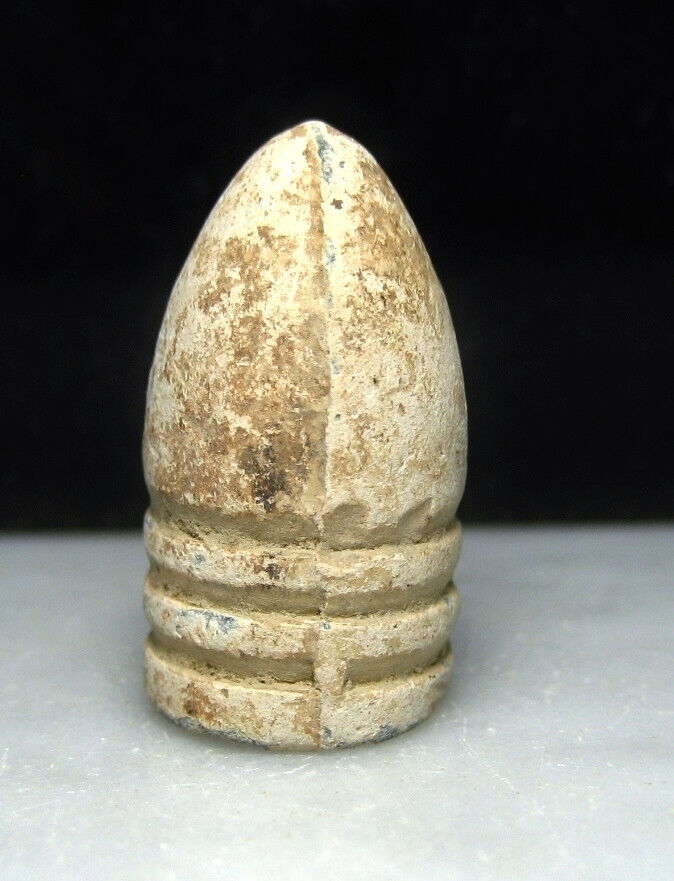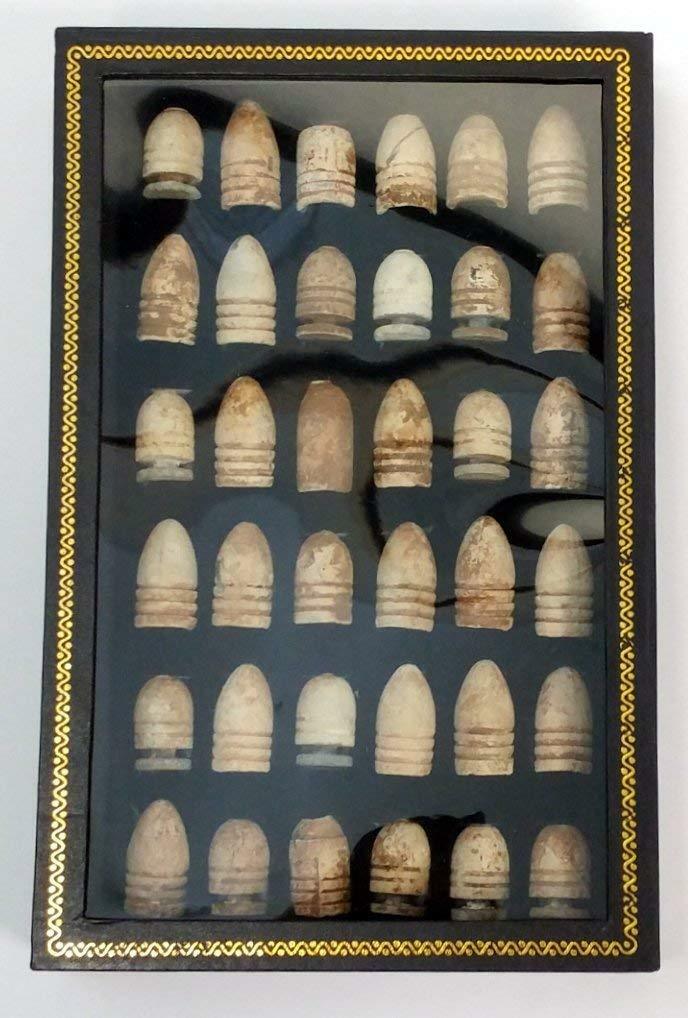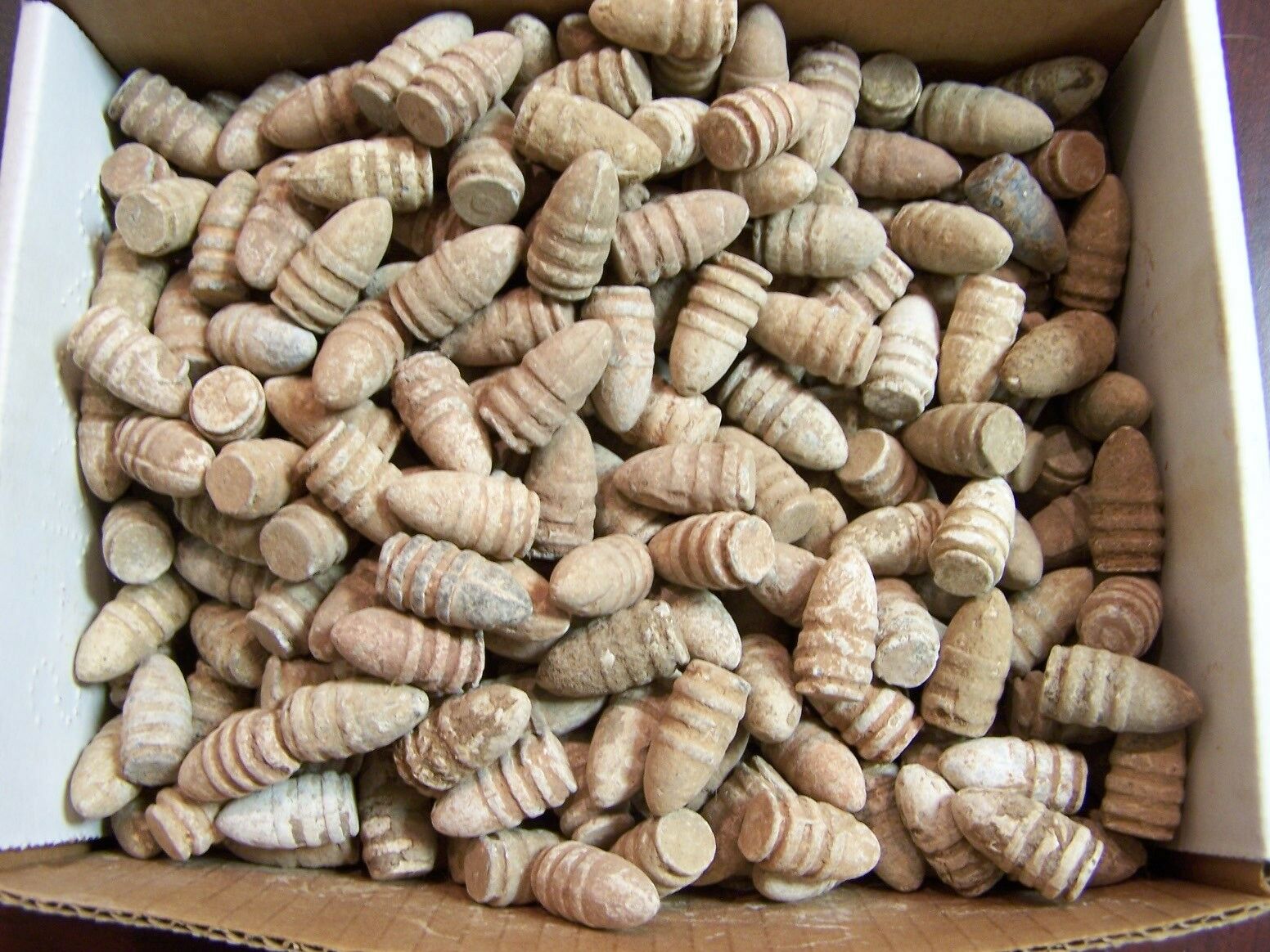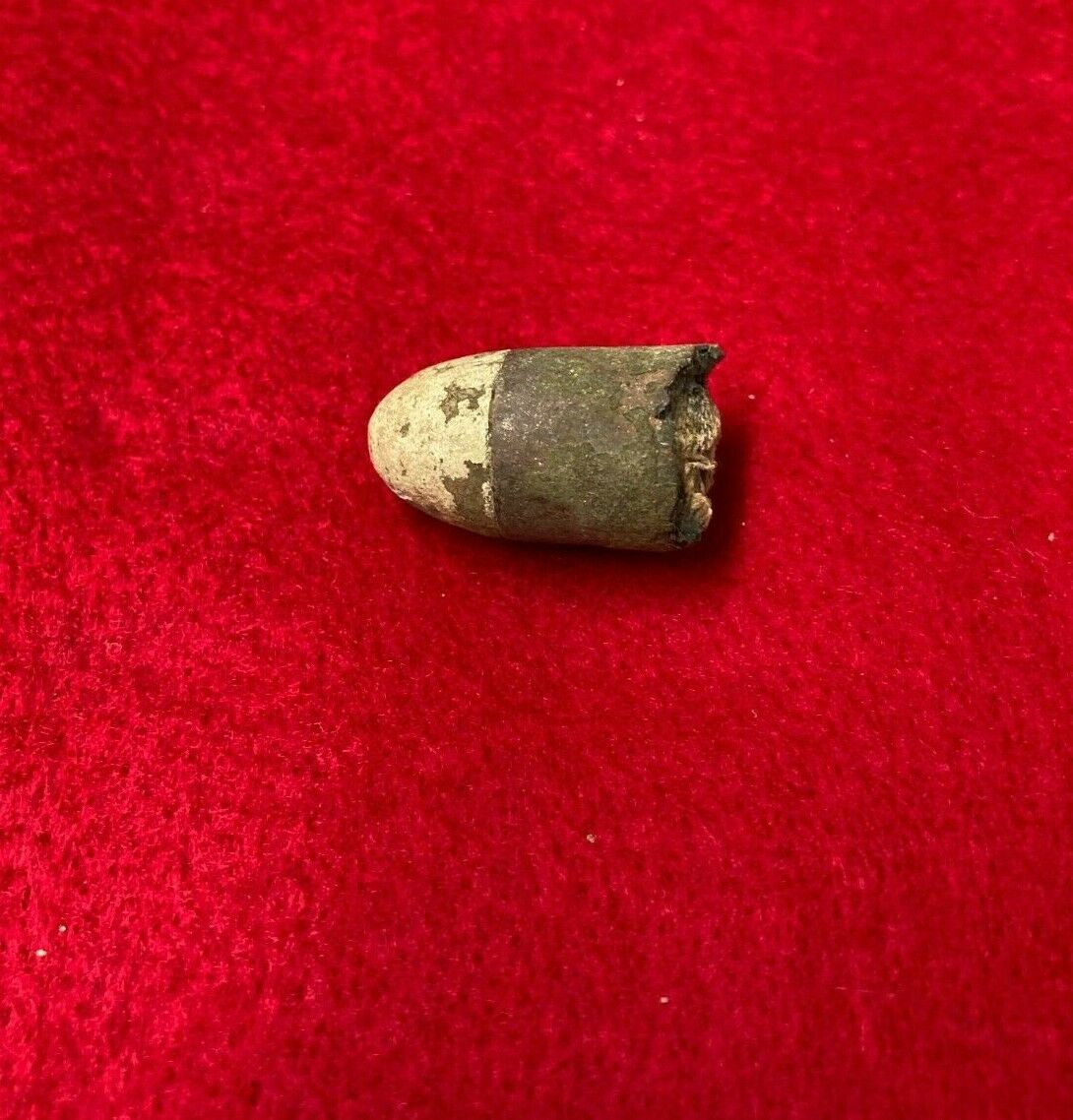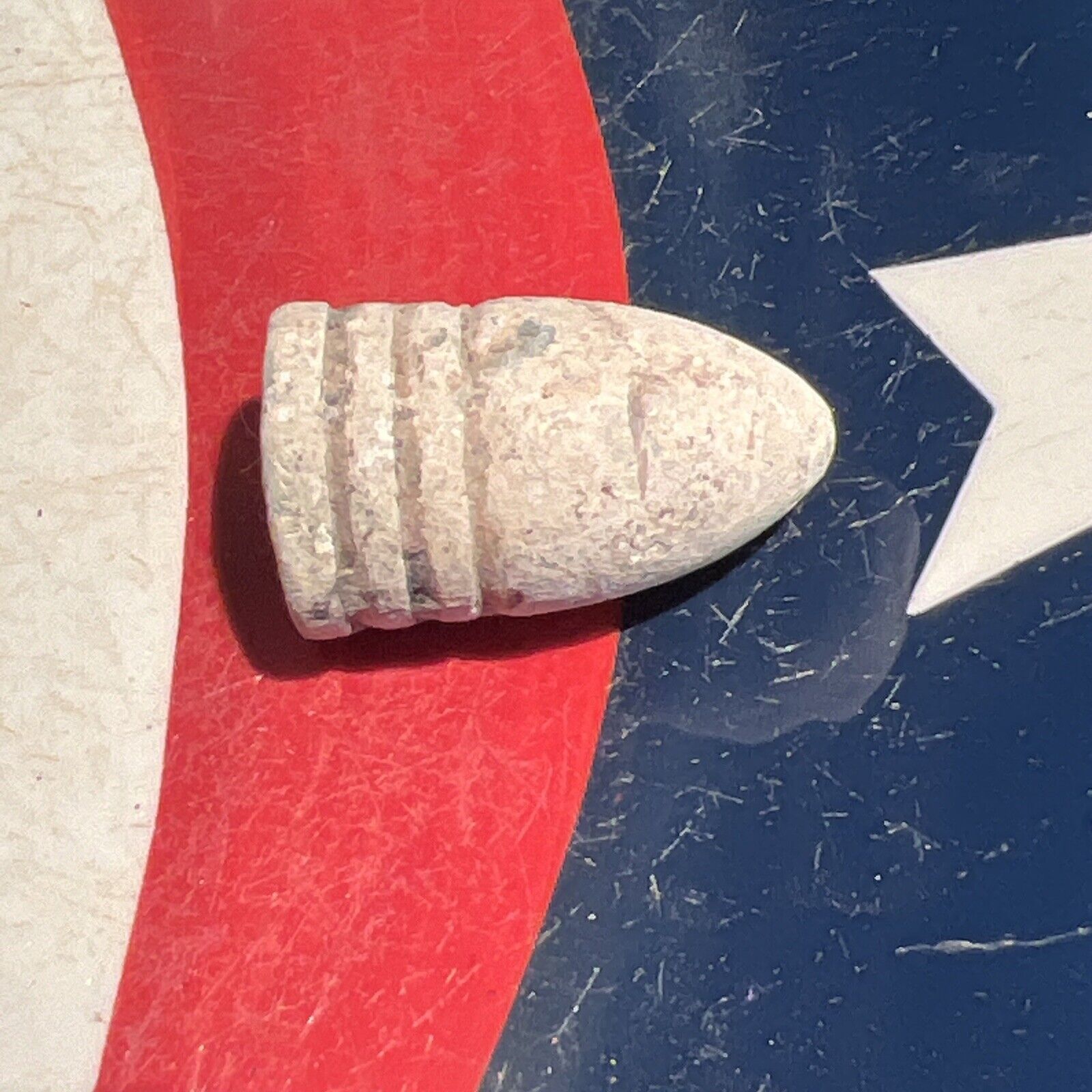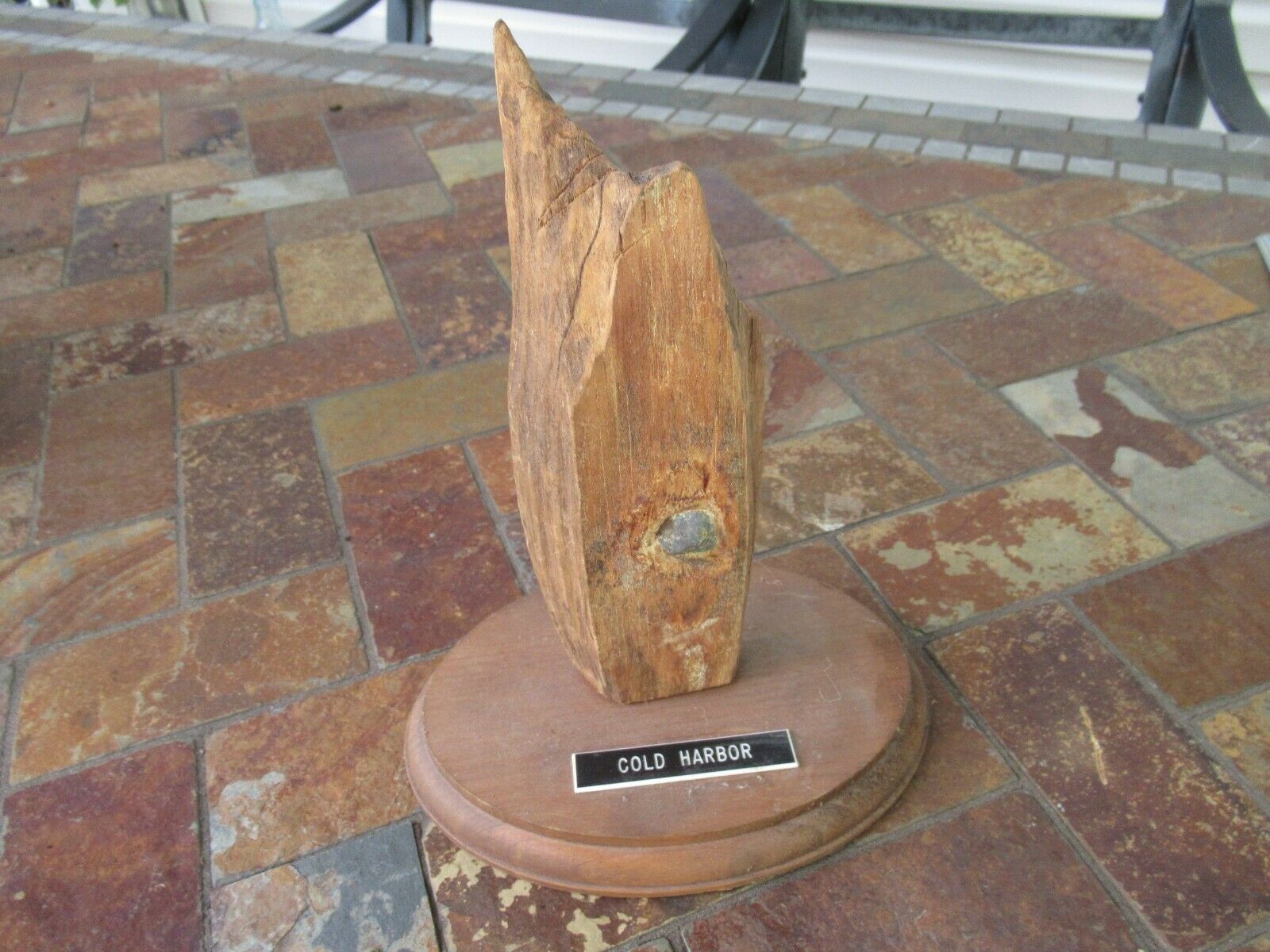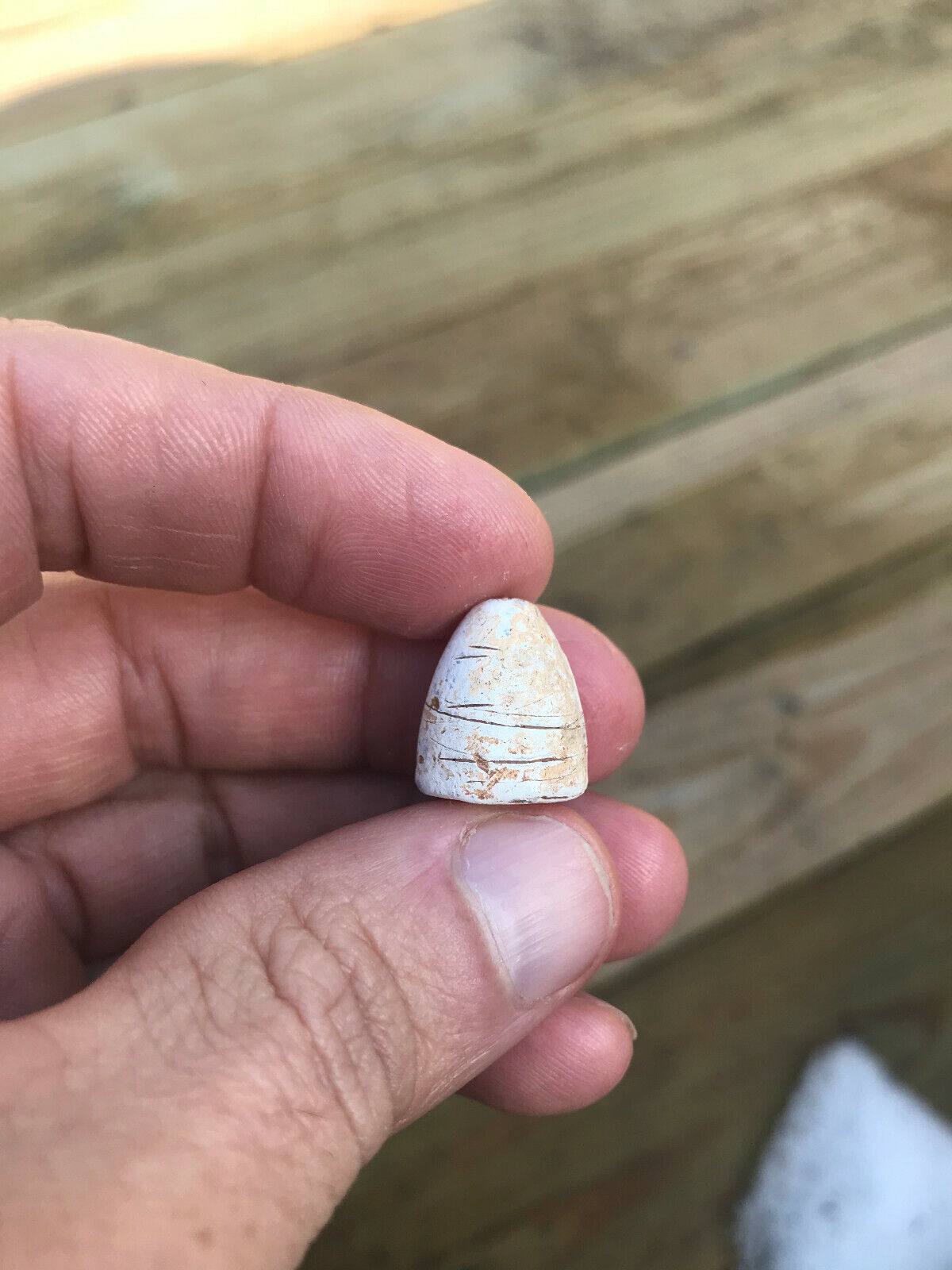-40%
The Battle of Spotsylvania VA Recovered Civil War Relic Dropped .577 Bullet
$ 10.02
- Description
- Size Guide
Description
We are working as partners in conjunction with Gettysburg Relics to offer some very nice American Civil War relics for sale. The owner of Gettysburg Relics was the proprietor of Artifact at 777 on Cemetery Hill in Gettysburg for a number of years, and we are now selling exclusively on eBay.THE BATTLE OF SPOTSYLVANIA, VIRGINIA - Recovered from the Spotsylvania, Virginia Battlefield - A very nice example - dropped side-cast .577 Caliber 3-Ring Rifle Bullet
This dropped side-cast .577 Caliber 3-Ring Rifle Bullet
was recovered by a relic hunter from the site of
the Spotsylvania Virginia Battlefield
.
The digger began metal detecting in 1971 and was always careful to store his artifacts so that the find location was documented. I acquired this relic directly from the digger. A provenance letter with information and digger's name (he is living) will be included.
'The Battle of Spotsylvania Court House, sometimes more simply referred to as the Battle of Spotsylvania (or the 19th-century spelling Spottsylvania), was the second major battle in Lt. Gen. Ulysses S. Grant and Maj. Gen. George G. Meade's 1864 Overland Campaign of the American Civil War. Following the bloody but inconclusive Battle of the Wilderness, Grant's army disengaged from Confederate General Robert E. Lee's army and moved to the southeast, attempting to lure Lee into battle under more favorable conditions. Elements of Lee's army beat the Union army to the critical crossroads of Spotsylvania Court House, Virginia, and began entrenching. Fighting occurred on and off from May 8 through May 21, 1864, as Grant tried various schemes to break the Confederate line. In the end, the battle was tactically inconclusive, but both sides declared victory. The Confederacy declared victory because they were able to hold their defenses. The United States declared victory because the Federal offensive continued and Lee's army suffered losses that could not be replaced. With almost 32,000 casualties on both sides, Spotsylvania was the costliest battle of the campaign.
On May 8, Union Maj. Gens. Gouverneur K. Warren and John Sedgwick unsuccessfully attempted to dislodge the Confederates under Maj. Gen. Richard H. Anderson from Laurel Hill, a position that was blocking them from Spotsylvania Court House. On May 10, Grant ordered attacks across the Confederate line of earthworks, which by now extended over 4 miles (6.4 km), including a prominent salient known as the Mule Shoe. Although the Union troops failed again at Laurel Hill, an innovative assault attempt by Col. Emory Upton against the Mule Shoe showed promise.
Grant used Upton's assault technique on a much larger scale on May 12 when he ordered the 15,000 men of Maj. Gen. Winfield Scott Hancock's corps to assault the Mule Shoe. Hancock was initially successful, but the Confederate leadership rallied and repulsed his incursion. Attacks by Maj. Gen. Horatio Wright on the western edge of the Mule Shoe, which became known as the "Bloody Angle", involved almost 24 hours of desperate hand-to-hand fighting, some of the most intense of the Civil War. Supporting attacks by Warren and by Maj. Gen. Ambrose Burnside were unsuccessful.
Grant repositioned his lines in another attempt to engage Lee under more favorable conditions and launched a final attack by Hancock on May 18, which made no progress. A reconnaissance in force by Confederate Lt. Gen. Richard S. Ewell at Harris farm on May 19 was a costly and pointless failure. On May 21, Grant disengaged from the Confederate Army and started southeast on another maneuver to turn Lee's right flank, as the Overland Campaign continued toward the Battle of North Anna.'
All of the collections that we are offering for sale are guaranteed to be authentic and are either older recoveries, found before the 1960s when it was still legal to metal detect battlefields, or were recovered on private property with permission. Some land on Battlefields that are now Federally owned, or owned by the Trust, were acquired after the items were recovered. We will not sell any items that were recovered illegally, nor will we sell any items that we suspect were recovered illegally.
Thank you for viewing!
